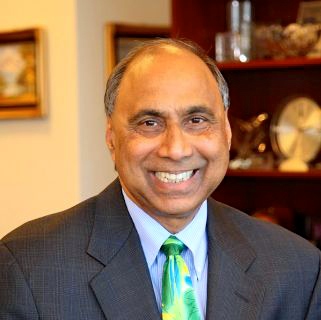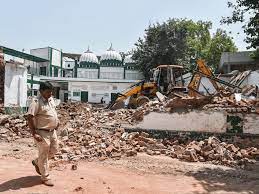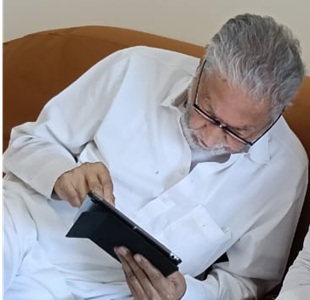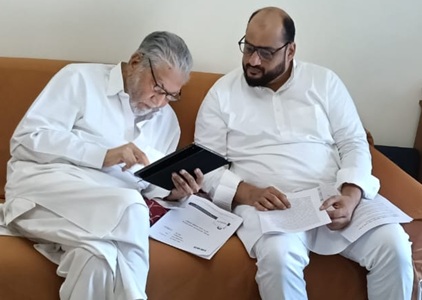Frank F. Islam
The plight of undocumented immigrants has been at the front and center of America’s national political debates for decades. But there is one group of immigrants whose predicament has been largely ignored or forgotten. It is the more than 1.2 million people waiting in line for employment-based green cards.
Most individuals who are stuck in the work-based green card backlog are Indian nationals – the majority of whom work in the information technology sector – currently living and working in the United States. Many of them applied for the permanent resident status as far back as the 1990s.
The United States only makes available 140,000 green cards annually for those who seek to immigrate based on their employment. The reason Indian nationals are facing inordinate delays in obtaining permanent resident status is a U.S. law that says citizens of no single nation can get more than 7 percent of green cards any given year. That means no more than 9,800 Indian citizens can be admitted as permanent residents a year under the employment-based green card category.
A majority of professionals coming to the United States every year for employment through two popular visa work visas — H-1 and L-1 — are Indians. According to the U.S. Citizenship and Immigration Services (USCIS), nearly 75 percent of the more than 421,000 H-1B visa applicants in the fiscal year 2019 were Indian citizens. (The figures include petitions for new visas, as well as for visa renewals.) Chinese nationals were a distant second — 12 percent. Similarly, a majority of the professionals in the country on L-1 visas are also Indian nationals.
H-1B and L-1 visa holders can only live and work in the U.S. for a limited number of years. Therefore, most of them apply for permanent resident status, within a few years of arriving in the United States.
In any given year, tens of thousands of Indians — in certain years more than a hundred thousand — apply for green cards.With no more than 10,000 Indians eligible for green cards a year, a vast majority of these applicants have no choice but to wait for their turn.
Pointing out the absurd nature of the backlog, Forbes wrote earlier this year: “Without a change in immigration law, it will be sometime in the year 2216—195 years from now—when the last person born in India waiting today in the employment-based immigrant backlog is expected to receive a green card.”
Apple CEO Tim Cook wrote in recent a letter to Homeland Security Secretary Alejandro Mayorkas, “The backlogs have created uncertainty for major employers and caused anxiety for our employees and their families who have, in some cases, waited decades to receive permanent residence status,”
Those who are stuck in the green card backlog and immigration activists backing them have been campaigning to remove the country quota for years, calling the system discriminatory. In recent years, a number of lawmakers have introduced bills in U.S. Congress to eliminate the country cap. These legislative efforts have the backing of America’s technology industry, the biggest beneficiary of the H-1B and L-1 visas.
The problems of those in backlog were compounded by the fact that the U.S. Citizenship and Immigration Services (USCIS) processing time has considerably increased in the aftermath of Covid-19. The agency reportedly failed to fill the annual quota of 140,000 in the last fiscal year.
However, in recent weeks, two congressional interventions gave a small glimmer of hope for many in green card limbo. Because of Covid-related restrictions imposed by the Trump administration on foreign nationals entering the United States, roughly 120,000 green card slots that were allotted for family members of U.S. citizens have gone unused.
On September 3, two Democratic lawmakers, Rep. Kathy Manning of North Carolina and Scott Peters of California, urged the Biden administration to explore the possibility of allotting the unused to slots to those in green card backlog. To date, the administration has taken no action on this request.
In a separate move, Indian American Rep. Raja Krishnamoorthi, Manning and 38 other colleagues, wrote to House Speaker Nancy Pelosi and Senate Majority Leader Chuck Schumer requesting them to provide green cards to tens of thousands in the backlog through the budget reconciliation package.
“Failure to provide a path to lawful permanent residence for the 1.2 million people in the employment-based green card backlog, most of whom are H-1B visa holders, would be tantamount to staging an economic recovery with one hand tied behind our back,” they wrote.
The Democrats did attempt to include a measure to give green card applicants permanent residency along with a pathway to citizenshipfor millions of undocumented immigrants in the $3.5 trillion economic spending bill which is still being refined. But, that move was shot down twice by Senate parliamentarian Elizabeth Macdonough.
This keeps those in the green card backlogin limbo.Because they are uncertain about their future, they are unable to change jobs, as, in some cases, it would involve starting the green card process all over again. In addition, many do not buy homes or invest in properties because of their uncertain immigration status.
There have been two unsuccessful attempts to reform the United States immigration system in the first two decades of this 21st century. Because of the current polarization and divided nature of politics in the U.S.,it does not seem likelyany significant reform will be forthcoming inthe early years of this decade.
This means unfortunately, the Indians in green card limbo today will most probably have to remain there for some time. That said, however, the U.S. immigration system will be reformedat some time in the future. And, when it does, through the efforts of Indian American advocates with influence in both political parties, the years spent in limbo for many will be rewarded with green cards.
(Frank F. Islam is an Entrepreneur, Civic Leader, and Thought Leader based in Washington DC. The Views expressed here are personal)






0 Comments